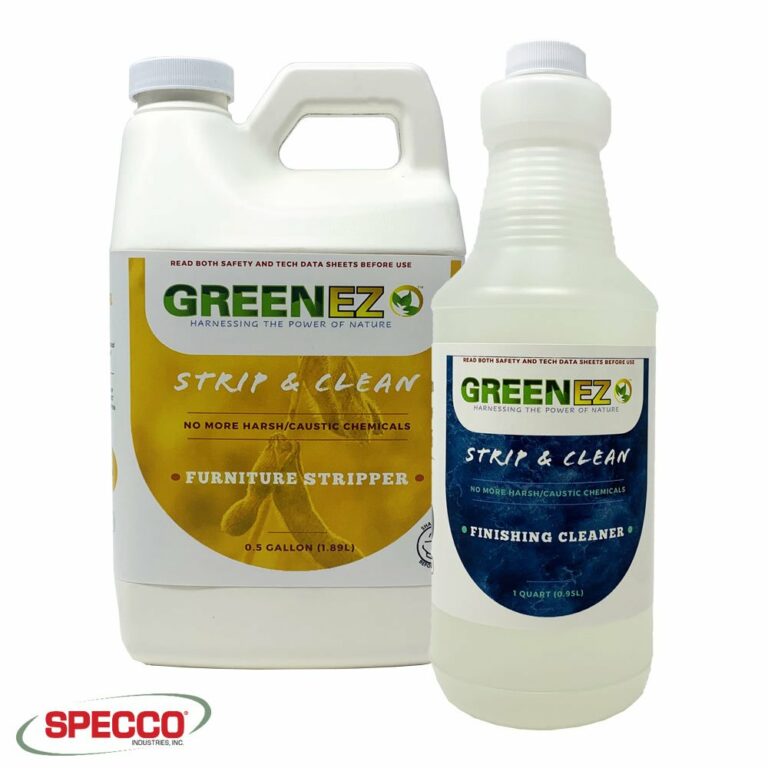How to Care for Eco-Friendly Furniture
Are you wondering How to Care for Eco-Friendly Furniture? Look no further! In this article, we will provide you with practical and sustainable tips to keep your eco-friendly furniture looking as good as new.
We all want to do our part to protect the environment, and taking care of our furniture is a great place to start. By following these simple steps, you can extend the lifespan of your eco-friendly furniture and minimize your ecological footprint. So, let’s dive in and learn how to care for eco-friendly furniture the right way. Happy reading!
How to Care for Eco-Friendly Furniture?
Eco-friendly furniture is not only stylish and sustainable, but it also helps reduce our carbon footprint. Whether you have just invested in eco-friendly furniture or are considering making the switch, it’s important to know how to properly care for these environmentally conscious pieces. By following some simple maintenance tips and using eco-friendly cleaning methods, you can ensure that your furniture stays in great condition while minimizing harm to the environment.
1. Dust Regularly
Dust can accumulate on furniture surfaces, making them look dull and dirty. Regular dusting helps prevent dirt and dust particles from building up and scratching the surface of your eco-friendly furniture. Here are some tips for effective dusting:
- Use a microfiber cloth: Microfiber is gentle and effective at capturing dust particles without spreading them around.
- Avoid chemical dusting sprays: Instead, lightly dampen the cloth with water or use a natural homemade dusting spray.
- Dust in the direction of the grain: This helps preserve the natural beauty of the wood or other materials.
2. Protect from Sunlight and Heat
Excessive exposure to sunlight and high heat can cause damage to eco-friendly furniture. Here’s how you can protect your furniture from these elements:
- Avoid direct sunlight: Place your furniture away from windows or use curtains and blinds to filter out harmful UV rays.
- Use furniture pads: Heat can damage the finish or warp the materials, so protect your furniture by using pads or coasters under hot objects.
- Consider window films: If your furniture is exposed to direct sunlight, consider applying window films that block UV rays.
3. Clean Spills Immediately
Accidents happen, but it’s crucial to clean up spills promptly to prevent stains and damage to your eco-friendly furniture. Follow these steps for effective spill clean-up:
- Blot the spill: Use a clean cloth or paper towel to blot the spill gently. Avoid rubbing, as it can push the liquid deeper into the furniture.
- Use mild soap and water: For water-resistant surfaces, mix a small amount of mild soap with water and gently clean the area with a soft cloth.
- Remove excess moisture: After cleaning, use a dry cloth to absorb any remaining moisture. Allow the furniture to air dry completely.
4. Prioritize Preventive Maintenance
Preventive maintenance can help extend the lifespan of your eco-friendly furniture. Here are some tips to keep in mind:
- Trim pets’ nails: If you have pets, make sure to keep their nails trimmed to prevent scratches on furniture surfaces.
- Rotate cushions: If your furniture has removable cushions, rotate them regularly to distribute wear and tear evenly.
- Use furniture protectors: Consider using furniture protectors, such as covers or pads, to shield your furniture from spills, pet damage, or general wear.
5. Select Eco-Friendly Cleaning Products
When it comes to cleaning your eco-friendly furniture, it’s important to choose cleaning products that are safe for the environment. Avoid harsh chemicals and opt for natural alternatives instead. Here are some eco-friendly cleaning solutions you can try:
- Vinegar and water: Mix equal parts white vinegar and water to create a gentle cleaning solution for most surfaces. Test it on a small, inconspicuous area first.
- Lemon juice: Dilute lemon juice with water to remove stains or as a natural furniture polish.
- Baking soda paste: Create a paste using baking soda and water to remove tough stains or odors. Apply the paste, let it sit for a few minutes, then wipe it off with a damp cloth.
6. Avoid Harsh Cleaning Techniques
While it’s important to keep your furniture clean, avoid using harsh cleaning techniques that can damage eco-friendly materials. Here are some things to avoid:
- Avoid abrasive tools: Scrubbing with abrasive brushes or scouring pads can scratch the surface of your furniture.
- Steer clear of ammonia and bleach: These chemicals can be harmful to the environment and may damage the finish or color of your furniture.
- Read manufacturer’s instructions: Always follow the manufacturer’s recommended cleaning methods for your specific eco-friendly furniture.
7. Regularly Inspect and Maintain
Regular inspections and maintenance can help identify and address issues before they become major problems. Here’s what you should do:
- Check for loose joints or screws: Periodically inspect your furniture for loose joints or screws and tighten them if necessary.
- Repair minor damages promptly: Address any minor damages, such as scratches or dents, as soon as possible to prevent further deterioration.
- Follow manufacturer’s guidelines: Refer to the care instructions provided by the manufacturer for specific maintenance recommendations.
8. Consider Natural Wood Oils or Waxes
If your eco-friendly furniture is made of wood, applying natural wood oils or waxes can help protect and enhance its appearance. These products can nourish the wood and provide a protective barrier. Be sure to choose eco-friendly options without toxic chemicals.
9. Avoid Excessive Weight and Pressure
To prevent your furniture from warping or breaking, avoid excessive weight or pressure. Here’s what you can do:
- Avoid sitting or standing on delicate furniture pieces: Some eco-friendly furniture may not be designed to support heavy weight, so use chairs and tables as intended.
- Be cautious when moving furniture: Lift and carry furniture instead of dragging it, which can damage the legs or joints.
- Use furniture sliders: When moving heavy pieces, use furniture sliders to minimize friction and reduce the risk of scratches.
10. Seek Professional Help if Needed
If you’re unsure about how to properly care for a specific type of eco-friendly furniture or if you encounter significant damage, it’s always best to seek professional help. Furniture craftsmen or restoration specialists can provide expert advice and assistance.
Taking care of your eco-friendly furniture not only ensures its longevity but also contributes to a more sustainable lifestyle. By adopting these care practices and using environmentally friendly cleaning methods, you can enjoy your furniture for years to come while minimizing your impact on the planet.
How To Be An ECO FRIENDLY Furniture Flipper | An Earth Day Special 🙂
Frequently Asked Questions
How do I care for eco-friendly furniture?
Proper care and maintenance of eco-friendly furniture is essential to prolong its lifespan and preserve its eco-friendly qualities. Here are some tips:
What cleaning products should I use on eco-friendly furniture?
When cleaning eco-friendly furniture, it is best to avoid harsh chemicals that can be harmful to the environment. Opt for mild, non-toxic cleaning products such as vinegar and water solutions, or eco-friendly furniture cleaners specifically designed for use on sustainable materials.
How should I protect eco-friendly furniture from everyday wear and tear?
To protect eco-friendly furniture from everyday wear and tear, consider using coasters or placemats to prevent scratches and water damage. Regularly dusting and wiping the furniture with a soft cloth can also help maintain its appearance and prevent dirt buildup.
What are some tips for preserving the finish of eco-friendly furniture?
To preserve the finish of eco-friendly furniture, it is important to avoid excessive exposure to direct sunlight, as this can cause fading and discoloration. Additionally, using furniture wax or polish specifically designed for eco-friendly materials can help maintain the furniture’s natural shine and protect it from stains.
How can I prevent moisture damage to eco-friendly furniture?
To prevent moisture damage, it is essential to keep eco-friendly furniture away from areas with high humidity levels or direct contact with liquids. Spills should be promptly wiped dry, and the use of coasters or mats can help protect against water damage.
Are there any specific care instructions for different types of eco-friendly furniture?
Yes, care instructions may vary depending on the type of eco-friendly furniture you have. For example, bamboo furniture may require periodic oiling to maintain its natural shine, while reclaimed wood furniture may benefit from occasional waxing. Always refer to the manufacturer’s guidelines for specific care instructions.
Can I repair minor damages on eco-friendly furniture myself?
Minor damages on eco-friendly furniture, such as scratches or dents, can often be repaired using natural remedies. For example, using a mixture of vinegar and olive oil can help diminish the appearance of scratches on wood furniture. However, if the damage is significant, it is best to consult a professional furniture repair service to avoid further complications.
Final Thoughts
caring for eco-friendly furniture is essential to maintain its longevity and environmental benefits. Regular dusting and cleaning with non-toxic cleaners help preserve the materials and keep them looking their best. Avoiding harsh chemicals and minimizing direct sunlight exposure can prevent discoloration and deterioration. Repairing any damages promptly and using eco-friendly repair products ensures sustainability. By following these simple practices, individuals can contribute to a healthier planet while enjoying the beauty and functionality of their eco-friendly furniture for years to come. How to care for eco-friendly furniture? It’s as easy as adopting these eco-conscious habits.




